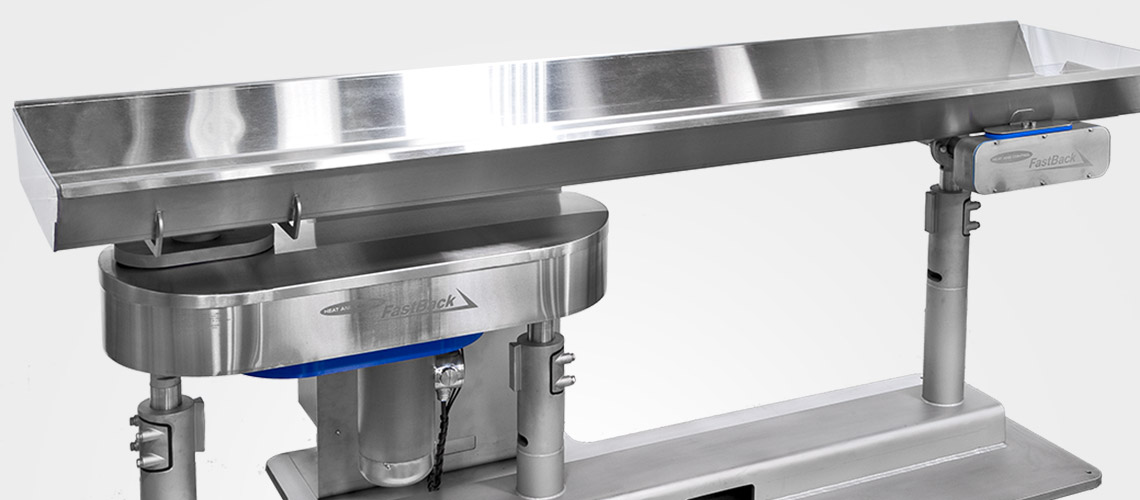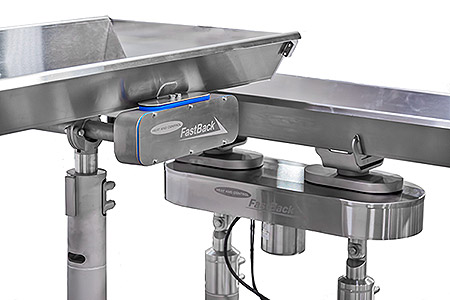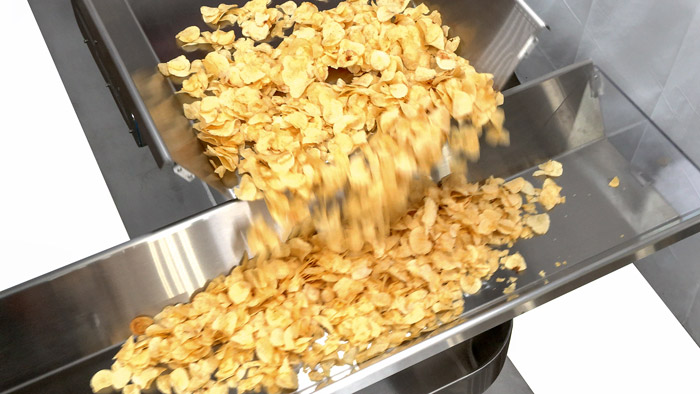Conveyors are fast, efficient mechanical handling apparatuses that transport materials from point A to point B and play a critical role in advancing industry.

 Archimedes’ screw system elevated water and has remained relatively the same. Appearing in the late 1700s, the first recognizable conveyors were made from leather belts with wooden beds. The Industrial Revolutions phased out manual labor on many production lines in favor of steam-powered machinery, including conveyors. With the introduction of new belt materials, such as rubber and steel, conveyors’ popularity expanded even more, but the key operational principles have not changed for most conveying systems.
Archimedes’ screw system elevated water and has remained relatively the same. Appearing in the late 1700s, the first recognizable conveyors were made from leather belts with wooden beds. The Industrial Revolutions phased out manual labor on many production lines in favor of steam-powered machinery, including conveyors. With the introduction of new belt materials, such as rubber and steel, conveyors’ popularity expanded even more, but the key operational principles have not changed for most conveying systems.
Vibrating conveyors are a versatile and efficient mechanical device for material handling. Offering a reliable and controlled method of transporting bulk materials between locations, conventional vibrating conveyor systems transport bulk materials, usually in a trough; the angled motion, or pitch, vibrates the product along the production line.
In the 1970s, vibratory/shaker conveyors quickly replaced most belt style conveyors in sanitary conveying applications, such as food and pharmaceutical. These conveyors are best used when manufacturers want to separate, spread, and de-clump their product.
While vibratory conveyors improved sanitation, speed, and production efficiency, they also brought in unwanted drawbacks, including product damage/breakage, seasoning fall off and buildup, and higher noise levels. The equipment’s vibrations which convey product also bounces and vibrates the seasoned products’ coatings off, leaving large volumes of seasoning from the coatings to build up on the pans and which can dislodge and be packaged with the product. In addition, the motion from these systems can cause direct breakage and introduce microcracks in some products, leading to breakage during packaging or delivery. When determining the optimal conveying solution, food industry producers should consider factors beyond simply moving product from point A to point B.
Horizontal motion conveyors (HMCs), also known as horizontal differential motion conveyors, use a complex system of cams and gears to generate a slow-advance/quick-return motion, the foundation of modern horizontal motion conveying.
Horizontal motion conveyors slide product along the pan, providing gentle and sanitary transportation of fragile materials, such as food products, agglomerated powders, and extruded, flaked, or pelletized products.
With major technological advances and the economy’s globalization in the 1980s, vibratory/shaker conveyors use in the food industry became increasingly problematic. The industry needed a robust, maintenance-free, quiet conveying solution that also was gentle enough to avoid product breakage, segregation, and loss of coatings.
 In the mid-nineties, the FastBack® horizontal motion conveyor entered the industry and quickly emerged over vibratory/shaker conveyors to account for most of the non-processing sanitary conveyors used in french fry and potato chip applications. The reasons were clear: the gentle motion technology improved the finished product quality delivered to clients by eliminating product breakage, reducing or eliminating seasoning and coating fall-off, reducing sanitation downtime which increased productivity, and reducing ambient noise levels, positively impacting employee welfare.
In the mid-nineties, the FastBack® horizontal motion conveyor entered the industry and quickly emerged over vibratory/shaker conveyors to account for most of the non-processing sanitary conveyors used in french fry and potato chip applications. The reasons were clear: the gentle motion technology improved the finished product quality delivered to clients by eliminating product breakage, reducing or eliminating seasoning and coating fall-off, reducing sanitation downtime which increased productivity, and reducing ambient noise levels, positively impacting employee welfare.
Horizontal motion conveyors are now the preferred means of conveying fragile products and coated foods such as snacks, fresh produce, and frozen prepared foods. Horizontal motion virtually eliminates product breakage and cracking and does not shake off coatings, breadings, or seasonings. Also, seasonings, oil, and other coatings do not build up in the pan, reducing downtime for cleaning, and horizontal motion reduces conveying noise with product (typically to 70—74 dB).
Horizontal motion conveyors are manufactured primarily as either inertial or direct drives. Inertial drives were the first type to the market, and they use swing weights to generate inertia that moves the pan and the drive together. These drives work best with long continuous conveyor pans but do not stop and start quickly, so they are at a disadvantage in weigher feed and modular distribution systems.
Direct drive units have a stationary drive where only the pan moves, so the slow forward and fastback motion of the pan glides the product along.
Modern conveyors integrate advanced technologies, such as PLCs and sensors, extending into the realm of the Internet of Things. Inertial drives generally deliver slower product travel rates, have delayed stop and start operation, and do not work well in modular and packaging feed applications.
Direct drive systems greatly reduce maintenance and energy usage and improve safety and packaging feed efficiency. Direct drives come in a variety of options. Some use mechanisms that change the speed and reverse the motion of the pan; some can reverse on the fly; some drives utilize servo-gearbox, linear motors, or rack and pinion devices which are prone to rapid wear. One patented design uses a completely contained drive HUB that has proven extremely reliable and has the lowest energy usage, in addition to not requiring preventative maintenance.
For many food processors, one of the key considerations is ROI, making horizontal motion conveyors desirable as they provide high value up front, low operating costs, exceptional longevity, and superior performance, especially in the areas of product efficiency, packaging efficiency, and overall uptime. Horizontal motion conveyors will likely continue to play a critical role in advancing the food industry.
Horizontal motion conveying offers several key benefits:
These benefits make horizontal motion conveying a preferred choice in industries where gentle handling, efficiency, and low maintenance are priorities.
Solutions from Heat and Control®: FastBack 4.0 Horizontal Motion Conveyor
Heat and Control®, a world-leading equipment manufacturer, offers the latest technology and highest quality equipment for conveying, packaging, and inspecting, and develops innovative solutions for manufacturers globally.
The industry needed a robust, maintenance-free, quiet conveying solution that also was gentle enough to avoid product breakage, segregation, and loss of coatings.
The FastBack 4.0 is beautifully simple. Its sleek and robust design has higher capacity than previously, cleans easily, runs quietly, and has 70% fewer moving parts than other models. With no pinch points or moving arms to cover and protect, the working environment is safer and more streamlined.
The patented circular-to-linear motion design gently handles the product so it is undamaged and the coatings are undisturbed, providing the ultimate performance and flexibility—and the industry’s highest travel rates and flow rate capacity.